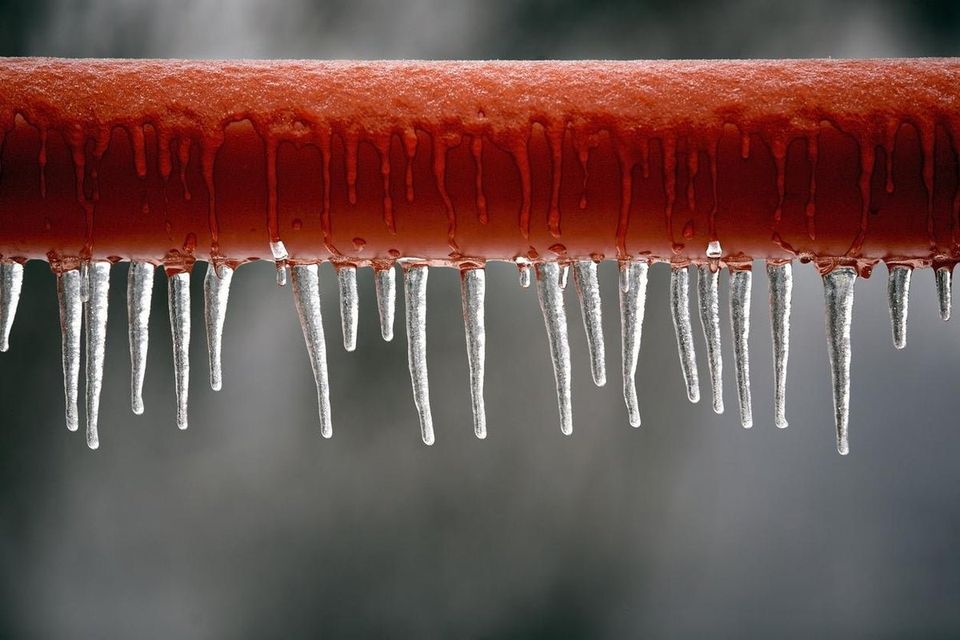Crucial Advice for Avoiding Frozen Plumbing in Cold Weather Seasons
Crucial Advice for Avoiding Frozen Plumbing in Cold Weather Seasons
Blog Article
Just about everyone may have their unique way of thinking in relation to How To Avoid Freezing Pipes.

Cold weather can damage your pipes, particularly by freezing pipes. Below's how to prevent it from taking place and what to do if it does.
Introduction
As temperatures decrease, the risk of icy pipelines rises, possibly causing costly repair services and water damage. Understanding just how to avoid frozen pipelines is vital for house owners in chilly environments.
Avoidance Tips
Shielding vulnerable pipelines
Wrap pipes in insulation sleeves or utilize warmth tape to shield them from freezing temperatures. Concentrate on pipelines in unheated or exterior areas of the home.
Home heating strategies
Keep indoor areas sufficiently heated, particularly areas with pipes. Open cabinet doors to allow cozy air to circulate around pipes under sinks.
Just how to recognize icy pipes
Seek lowered water flow from faucets, unusual smells or noises from pipes, and noticeable frost on exposed pipelines.
Long-Term Solutions
Architectural modifications
Think about rerouting pipes far from exterior walls or unheated locations. Add extra insulation to attic rooms, basements, and crawl spaces.
Upgrading insulation
Invest in premium insulation for pipelines, attic rooms, and wall surfaces. Proper insulation assists maintain constant temperatures and minimizes the threat of icy pipelines.
Protecting Outside Plumbing
Yard tubes and outdoor taps
Disconnect and drain pipes garden pipes before winter months. Install frost-proof faucets or cover outdoor faucets with shielded caps.
Comprehending Icy Pipelines
What creates pipelines to ice up?
Pipes freeze when exposed to temperature levels below 32 ° F (0 ° C) for extended durations. As water inside the pipelines ices up, it increases, putting pressure on the pipeline wall surfaces and potentially creating them to burst.
Risks and damages
Frozen pipelines can cause water supply interruptions, building damages, and expensive repair services. Burst pipes can flooding homes and create extensive structural damages.
Indicators of Frozen Pipes
Recognizing icy pipes early can avoid them from rupturing.
What to Do If Your Pipes Freeze
Immediate activities to take
If you suspect icy pipes, maintain taps available to relieve pressure as the ice thaws. Utilize a hairdryer or towels soaked in hot water to thaw pipelines slowly.
Final thought
Protecting against frozen pipelines requires proactive measures and fast responses. By understanding the reasons, indications, and safety nets, homeowners can safeguard their pipes throughout cold weather.
5 Ways to Prevent Frozen Pipes
Drain Outdoor Faucets and Disconnect Hoses
First, close the shut-off valve that controls the flow of water in the pipe to your outdoor faucet. Then, head outside to disconnect and drain your hose and open the outdoor faucet to allow the water to completely drain out of the line. Turn off the faucet when done. Finally, head back to the shut-off valve and drain the remaining water inside the pipe into a bucket or container. Additionally, if you have a home irrigation system, you should consider hiring an expert to clear the system of water each year.
Insulate Pipes
One of the best and most cost-effective methods for preventing frozen water pipes is to wrap your pipes with insulation. This is especially important for areas in your home that aren’t exposed to heat, such as an attic. We suggest using foam sleeves, which can typically be found at your local hardware store.
Keep Heat Running at 65
Your pipes are located inside your walls, and the temperature there is much colder than the rest of the house. To prevent your pipes from freezing, The Insurance Information Institute suggests that you keep your home heated to at least 65 degrees, even when traveling. You may want to invest in smart devices that can keep an eye on the temperature in your home while you’re away.
Leave Water Dripping
Moving water — even a small trickle — can prevent ice from forming inside your pipes. When freezing temps are imminent, start a drip of water from all faucets that serve exposed pipes. Leaving a few faucets running will also help relieve pressure inside the pipes and help prevent a rupture if the water inside freezes.
Open Cupboard Doors
Warm your kitchen and bathroom pipes by opening cupboards and vanities. You should also leave your interior doors ajar to help warm air circulate evenly throughout your home.

Do you enjoy reading up on How To Avoid Freezing Pipes? Create a remark further down. We would be glad to listen to your ideas about this post. We are looking forward that you come back again in the future. Sharing is good. Helping others is fun. Kudos for your time. Don't hesitate to come by our blog back soon.
Book A Service Call Report this page